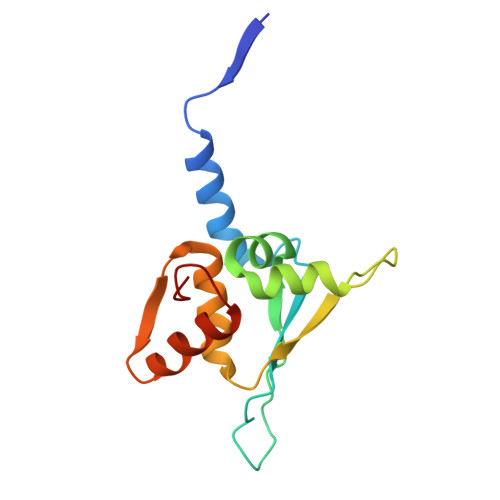The Arthropoda-specific Tramtrack group BTB protein domains use previously unknown interface to form hexamers.
Bonchuk, A.N., Balagurov, K.I., Baradaran, R., Boyko, K.M., Sluchanko, N.N., Khrustaleva, A.M., Burtseva, A.D., Arkova, O.V., Khalisova, K.K., Popov, V.O., Naschberger, A., Georgiev, P.G.(2024) Elife 13
- PubMed: 39221775
- DOI: https://doi.org/10.7554/eLife.96832
- Primary Citation of Related Structures:
8RC6 - PubMed Abstract:
BTB (Bric-a-brack, Tramtrack and Broad Complex) is a diverse group of protein-protein interaction domains found within metazoan proteins. Transcription factors contain a dimerizing BTB subtype with a characteristic N-terminal extension. The Tramtrack group (TTK) is a distinct type of BTB domain, which can multimerize. Single-particle cryo-EM microscopy revealed that the TTK-type BTB domains assemble into a hexameric structure consisting of three canonical BTB dimers connected through a previously uncharacterized interface. We demonstrated that the TTK-type BTB domains are found only in Arthropods and have undergone lineage-specific expansion in modern insects. The Drosophila genome encodes 24 transcription factors with TTK-type BTB domains, whereas only four have non‑TTK‑type BTB domains. Yeast two-hybrid analysis revealed that the TTK-type BTB domains have an unusually broad potential for heteromeric associations presumably through dimer-dimer interaction interface. Thus, the TTK-type BTB domains are a structurally and functionally distinct group of protein domains specific to Arthropodan transcription factors.
Organizational Affiliation:
Department of the Control of Genetic Processes, Russian Academy of Sciences, Moscow, Russian Federation.














